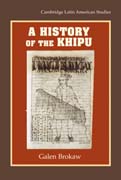
This book begins by proposing a theoretical model that reconciles orality-literacy studies and media theory in order to avoid the specious dichotomization of societies into those with and those without writing. The more relevant issue is the way in which a given society distributes semiotic functions among thevarious media that it employs and the forms of economic and political integration within which such media function. This theoretical model then informs a history of the Andean khipu from pre-Columbian times through the first 120 years of the colonial period. The first half of the book examines early Andean media and their socioeconomic and political contexts, culminating with the emergence of Wari and subsequently Inca khipu. The second half of the book documentsand analyzes the continued use of khipu by indigenous individuals and communities in their interactions with Spanish officials, chroniclers, and priests. The study corrects many common misconceptions, such as the alleged mass destruction of khipu in the late sixteenth century. Even more importantly, it highlights the dialogue that occurred in the colonial period between the administrative and historiographic discourses of alphabetic Spanish and those of native Andean khipu genres. INDICE: Introduction; Part I. Andean Media Prior to the Conquest: 1. EarlyAndean societies and semiotic practices; 2. Middle Horizon media and the emergence of the khipu; 3. The khipu and the Inca state; Part II. The Khipu in theColonial Period, 1532–1650: 4. Khipu historiography and colonial chronicles; 5. Spanish visitas and administrative khipu; 6. The khipu and the colonial state; 7. Ecclesiastical khipu and Spanish evangelization; Conclusion.
- ISBN: 978-0-521-19779-3
- Editorial: Cambridge University
- Encuadernacion: Cartoné
- Páginas: 320
- Fecha Publicación: 06/05/2010
- Nº Volúmenes: 1
- Idioma: Inglés
